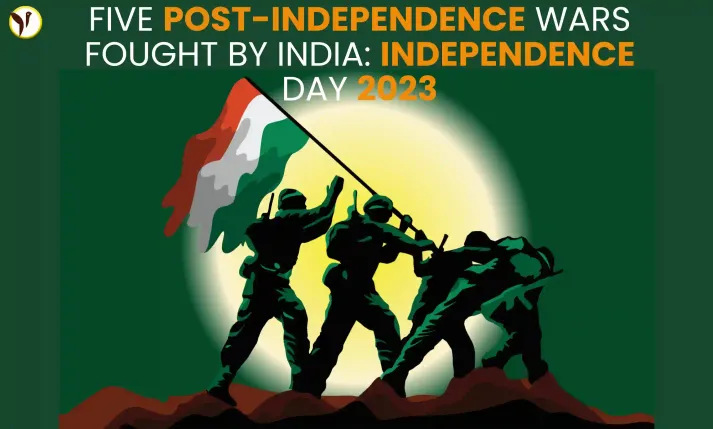The dawn of August 15, 1947, marked a new era for India as it emerged from the shackles of colonial rule. The pages of Indian History won’t forget the struggle India did in order to (be free of the evils) of British rule. But, Being independent and monitoring the long-lost freedom was more difficult than expected. Today, India is on the verge of being a widely known nation through its day-by-day progress. Meeting hands with the nation seems like a tremendous job when at the some time it faced critics from the top leaders for the same.
"Freedom is never dear at any price. It is the breath of life. What would a man not pay for living?"
- Mahatma Gandhi.
Despite the hurdles, India has made remarkable strides in various spheres, transitioning from a newly independent nation to a global player with a growing economy, vibrant democracy, and diverse cultural heritage.
But, Sometimes India still faces an orthodox nation that is secretly fighting inside its own boundaries. It’s no doubt that India as a whole is united and will always emerge stronger and never let it be bound to any other clutches ever again but fighting off these evils has always been hampering the success of India, which is a land of traditions and cultures.
Caste and Gender Inequities:
It’s hard to believe as we see women being supported but within the country, India is still fighting gender inequality. There are many villages that still prefer a boy, and girls fall victim to infanticides.
This social evil isn’t new but it has a deeper origin in this land of tradition and cultures. In India where society is divided into groups by caste and color, people still face problems in various parts of the country and are considered untouchables. As India is gradually moving towards women's empowerment more such evils stand in a way to make it completely free.
Poverty and Economic Inequality:
Poverty and inequality have long been pressing challenges in India, a nation of diverse cultures and vast socioeconomic disparities. Despite significant economic growth and development in recent decades, these issues continue to cast a shadow over the lives of millions.
Rural areas bear the brunt of this struggle, as agricultural dependence, limited access to education, and inadequate infrastructure hinder progress. Gender inequality is another facet of this complex issue. Women often face limited educational and economic opportunities, perpetuating cycles of poverty. Discrimination and cultural norms can hinder their participation in the workforce and decision-making processes.
Bribe and corruption
Civil society and media play a crucial role in exposing corrupt practices, but individuals often face risks and challenges when speaking out against powerful entities. Promoting a culture of transparency, encouraging whistleblowing, and fostering a sense of social responsibility can contribute to combatting corruption.
The fight for Independence was not the end of struggles for the nation. Blood of the Indian soldiers shed even after freeing the country from British Rule. The year India gained Independence another fight awaited which ended in 1948. Even after that India has fought several wars including the First and Second Kashmir Wars with Pakistan, the Sino-Indian War with China, and the Indo-Pakistani War of 1971.
INDO-Pakistan War (1947-1948)
A long-running dispute over Kashmir and cross-border terrorism grew into a conflict between these two independent nations. The territory of Kashmir was once a princely state which had a Hindu ruler but with a Muslim Majority Population. The conflict erupted in 1947, following the British withdrawal from the Indian subcontinent and the two countries' independence.
Pakistan sent tribal fighters, and India intervened, sparking a 1947 war, this eventually led the Hindu ruler to Join India. A UN-brokered 1948 ceasefire left Pakistan with a third, and India the rest. The ongoing dispute over Kashmir triggered further conflicts between India and Pakistan.
Sino-Indian War of 1962
A border dispute between China and India led to this second war after Independence. The dispute stemmed from a boundary disagreement over the McMahon Line, proposed in 1914. India claimed it as the border with Tibet, while China disputed it. The 1962 war started when Chinese troops attacked India's border posts, swiftly overpowering unprepared Indian forces. China won, holding captured territory. The conflict strained India-China relations.
Indo-Pakistan War of 1965
This second war with Pakistan was fought due to the Rann of Kutch and Lahore rectors. The 1965 Indo-Pakistani War was a military war between India and Pakistan that lasted from August to September of that year.
Border clashes in Rann of Kutch led to a 1965 war between India and Pakistan. Intense fighting ensued, and India gained ground, but Pakistan held major cities. Ceasefire and Tashkent Declaration in September restored captured territories. The war caused significant casualties, and strained relations, and kept the Kashmir conflict alive as a major tension point.
The Indo-Pakistan War of 1971
This was another war fought between India and Pakistan due to political and economic tensions.
In 1971, Pakistan's strike on Indian airfields sparked the war. India invaded East Pakistan, backed by Bengali fighters, encircling Pakistan's forces. India triumphed, leading to Bangladesh's independence. The conflict took the lives of a large number of Bengali and Pakistani fighters. But, this had a profound impact on the relationship between both nations, and years witnessed India-Pakistan relations, which remain uneasy and grew intense.
Kargil War of 1999
The Kargil War of 1999 began due to Pakistan-backed militants and soldiers infiltrating Indian territory along the Line of Control (LoC) in the Kargil district of Jammu and Kashmir. This conflict emerged over the disputed region, leading to a full-scale war with heavy fighting in the challenging terrain. India responded by launching a military operation to expel the intruders and regain control.
Time swiftly flows, and here comes another year – a birthday, an anniversary, a day for celebrations and honoring. We can picture you watching parades on TV, perhaps with kids beside you. Maybe you've lit a hopeful candle, battling those societal issues we talked about.
Tomorrow marks the 76th Independence Day, where the tricolor will flutter in every Indian heart. Let's celebrate like always, uniting our diverse cultures with the entire nation.
Wishing you a joyful Independence Day!
Happy Independence Day!
Written By Kratika Agarwal
Also, Read, Adani Ports share price falls after auditor Deloitte resigns







